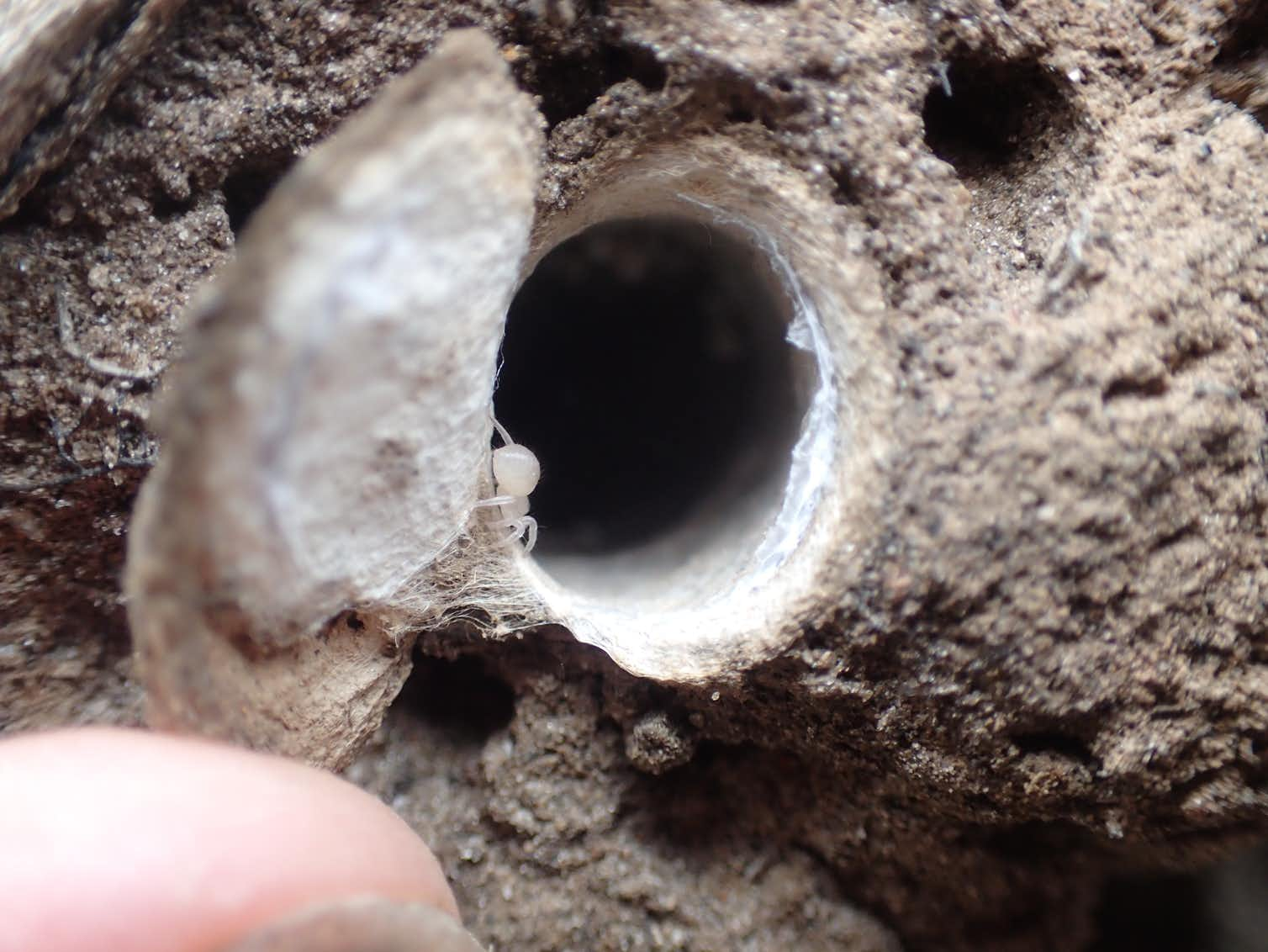Don’t forget about the little guys: invertebrates of Kangaroo Island struggle to bounce back

Arachnologist Jess Marsh was surveying Kangaroo Island’s Western River Wilderness Protection Area for micro-trapdoor spiders, but all she could see were small, exposed burrows.
“They’re about 5cm deep and when the fire goes through, it burns off the trapdoor and kills the spiders,” Jess explains, making the burrows pronounced against the charred landscape. “It’s not possible for them to burrow deeper, they’re vulnerable to fires of even a low intensity.”
Jess knew the fires that raged through 46 per cent of the island in 2019/2020 were bad news for this endemic species.

Before that first day of surveying, Jess says she was concerned, but didn’t fully understand the scale of the fires. “I always thought in the back of my head, ‘na they’ll be alright, fire is a natural thing’, which of course it is to some extent, but when we got out there and saw just how much had burned, it really hit home what we were dealing with and what we’ll likely have to deal with in the future.”
It was a stark contrast to when Jess had first arrived on Kangaroo Island in 2008 as a young student new to Australia from the UK and eager to study what the island had to offer in the way of spiders.
“Kangaroo Island is an amazing place for spiders because there’s a high level of endemism and there’s a massive amount of undescribed species, so for me it was a perfect place to land.” Towards the end of her PhD on the fire ecology of spiders in South Australia, Jess started surveying the habitat of the Kangaroo Island micro-trapdoor spider and mapping their distribution.
While much has been said of the island’s unique population of glossy black cockatoos, adorable Kangaroo Island dunnart, little pygmy possum and of course, those harrowing images of koalas being rescued, in Jess’s’ opinion, very little attention has been paid to the unique invertebrates that call the island home.
“This spider has a pretty interesting story,” she says. The Kangaroo Island micro-trapdoor spider is the only member of its genus in Australia, with its closest relative located in South Africa. It’s split from its South African relative two to 16 million years ago is of particular interest to scientists as it predates humans, meaning this spider likely travelled to Kangaroo Island on a piece of vegetation – a significant voyage for such a tiny spider.
Two populations exist on the island; one on the east end and one on the west end, but they’ve been split for over a million years making them genetically distinct from each other.
Jess lives on the east end of the island and, in addition to more formal surveys of the fire-impacted areas, also spends time searching for the spider around her own home. More than a year after the fires, she’s counted just five individuals in the fire ground. But it’s not just the fires that are pushing this spider to the brink, it’s also the invasion of the bridal creeper, a highly invasive weed, and new prescribed burnings that threaten the unburnt vegetation these spiders now rely on.
Spiders also have to compete with cute and cuddly koalas for conservation dollars.
“The conservation planning is very mammal biased, so including invertebrates in that conversation is really essential,” Jess says.
“Invertebrates like the Kangaroo Island micro-trapdoor spider, face a double-barrelled threat; due to restricted distributions they are at an elevated risk of extinction after large scale disturbances, but they are also lower down in the funding priorities than mammals and other vertebrates, receiving a lower portion of funding, and so research on them is restricted.”
As a post-doctoral researcher at Charles Darwin University, Jess is in the middle of a project that is assessing the impacts of the bushfires on invertebrates across Australia.
“It’s one way we’re trying to get invertebrates into the conversation. We need an overhaul in current thinking. There has been a shift in thinking since the fires, but it hasn’t gone far enough yet.”





